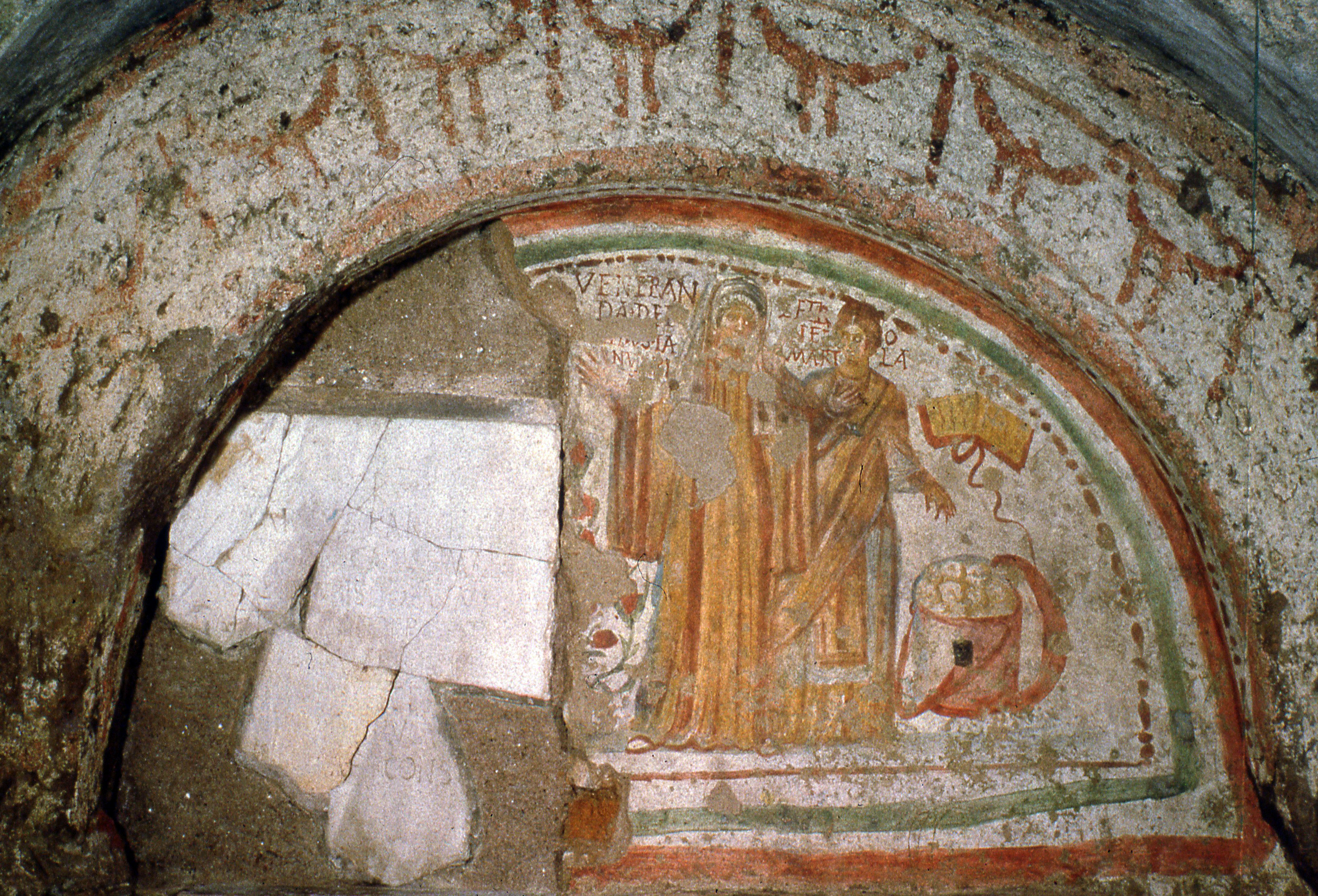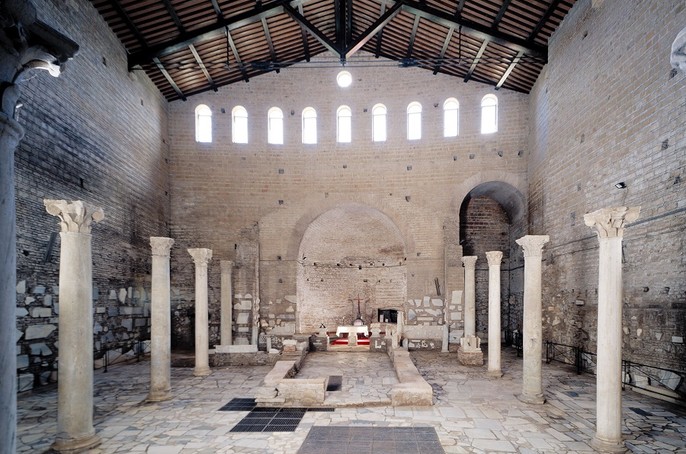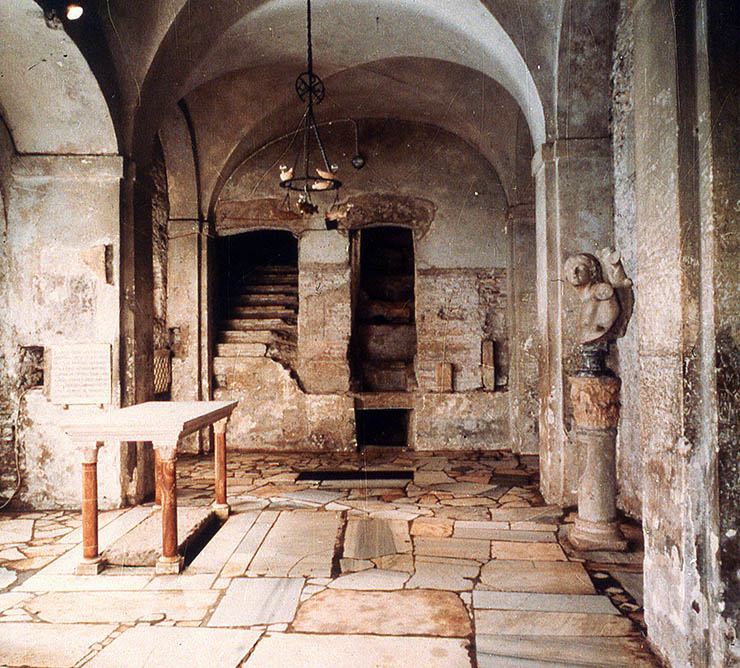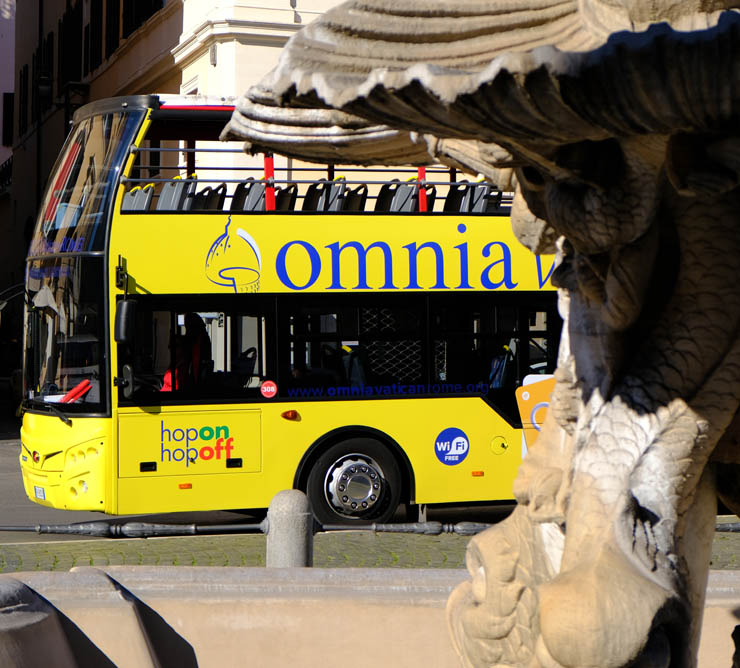The catacombs are underground areas that were born between the end of the second and the beginning of the third century AD, used for the burial and funeral commemoration of the members of the Christian community. These burial grounds were dug mainly in the tuff and in the pozzolana, as well as in other types of soil characterized by ease of processing and great resistance, such as to guarantee the creation of complex systems of tunnels and cubicles structured on different floors. Some of these rooms are richly decorated, others have housed the tombs of the martyrs who during the Middle Ages attracted the devotion of numerous pilgrims.
The Catacombs of Domitilla, located on via delle Sette Chiese, is one of the largest cemeteries in underground Rome and originates from some burial grounds set up on land belonging to Flavia Domitilla and donated by this to her freedmen. Flavia Domitilla was the grandson of Flavio Clemente, consul of 95 AD, and related to the imperial family. As a Christian, Flavia Domitilla was exiled by Domitian to the island of Ponza, where she died. The catacomb is divided on two main levels. In the so-called Hypogeum of the Flavians, Giovanni Battista de Rossi believed to identify the tombs of the Christian members of the family of Flavia Domitilla, while it is a pagan hypogeum referable between the end of the 2nd and the beginning of the 3rd century, which became Christian and was enlarged mid 3rd century. Towards the end of the third century, the bodies of the martyrs Nereus and Achilleus were placed in a crypt on the second floor which was transformed by Pope Damasus (366-384) into a small basilica, enlarged by Pope Siricius between 390 and 395 until reaching its current size.
Full tickets € 12,00 (Ticket € 10,00 + Booking fee € 2,00)
Reduced tickets € 9,00 (Ticket € 7,00 + Booking fee € 2,00)
Free tickets
Languages available for guided tours: Italian, English, Spanish, German
For others entrance times, languages and available days please write to info@omniavaticanrome.org
DOMITILLA
Address: Via delle Sette Chiese 282
From Termini Station:

Our commitment is to offer pilgrims and visitors, through the catacombs, an experience of communion with the testimonies of the first Christian communities, which tell and illustrate, in an extremely suggestive way, the roots of faith and the horizon of Christian hope.
Mons. Pasquale Iacobone
President of the Pontifical Commission for Sacred Archaeology
The tour starts from the Flavian hypogeum with fresco decorations of clear pagan origin which, however, welcomed, from the third century, the depictions of Noah in the ark and the prophet Daniel among the lions, as evidence of the Christianization of the area. Behind the apse of the basilica dedicated to the martyrs Nereus and Achilleus, you enter the cubicle of Veneranda. The deceased is represented in the frescoed lunette accompanied to heaven by the martyr Petronilla. In an arcosolium it is possible to admire a scene of an apostolic college presided over in the center by the figure of Christ enthroned and with the depictions in the lunette of Saints Peter and Paul. Very particular is the burial that the fossor Diogenes prepared for himself. The fossori were a guild of workers specialized in the excavation and decoration of the catacombs.
hide
The Catacombs of Domitilla are among the largest in Rome. They include a semi-hypogean basilica, 17 kilometres of tunnels and corridors on four different levels and a total of 150.000 burials. They stretch along the ancient via Ardeatina on the site of the properties that belonged to the noblewoman Flavia Domitilla, who Domitian sentenced to death for religious reasons. The heart of the Catacomb houses the only semi-underground basilica in Rome, dedicated to the martyrs Nereo and Achilleo, two soldiers who were probably victims of persecutions by Diocletian (304 AD).
With the transformation into a sanctuary by Pope Damasus I, the cemetery became a place of pilgrimage and devotion until the 9th century when, due to the unhealthiness of the suburb and of the Roman countryside, Pope Leo III decided to have the relics transferred within the Aurelian walls, to the church of Saints Nereo and Achilleo in the Baths of Caracalla area.
hide
The catacombs of S. Sebastiano. The cemetery ad catacumbas.

Discover the Eternal City aboard our unmistakable yellow Vatican&Rome Open Bus and explore new routes. Comfortably seated and with a multilingual audio guide system, you can look at the Eternal City from another point of view. An experience loved by adults and children.